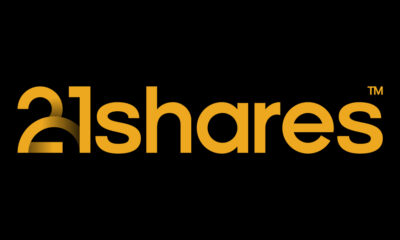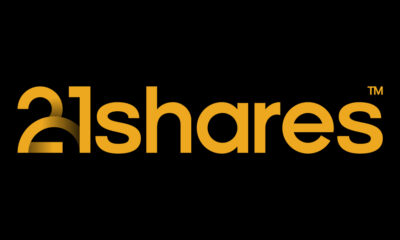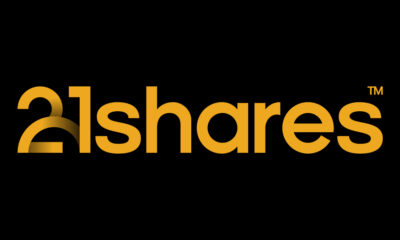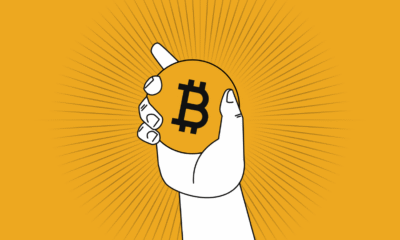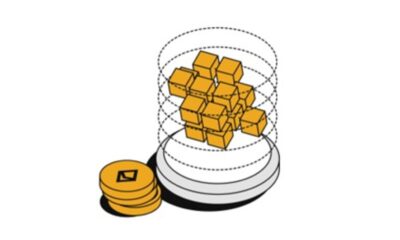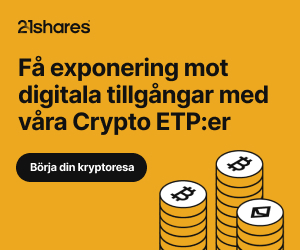Nyheter
Crypto’s Turmoil Cooling Off, The Race to find Metamask’s Competitor Gears Up, and More ..
Publicerad
3 år sedanden
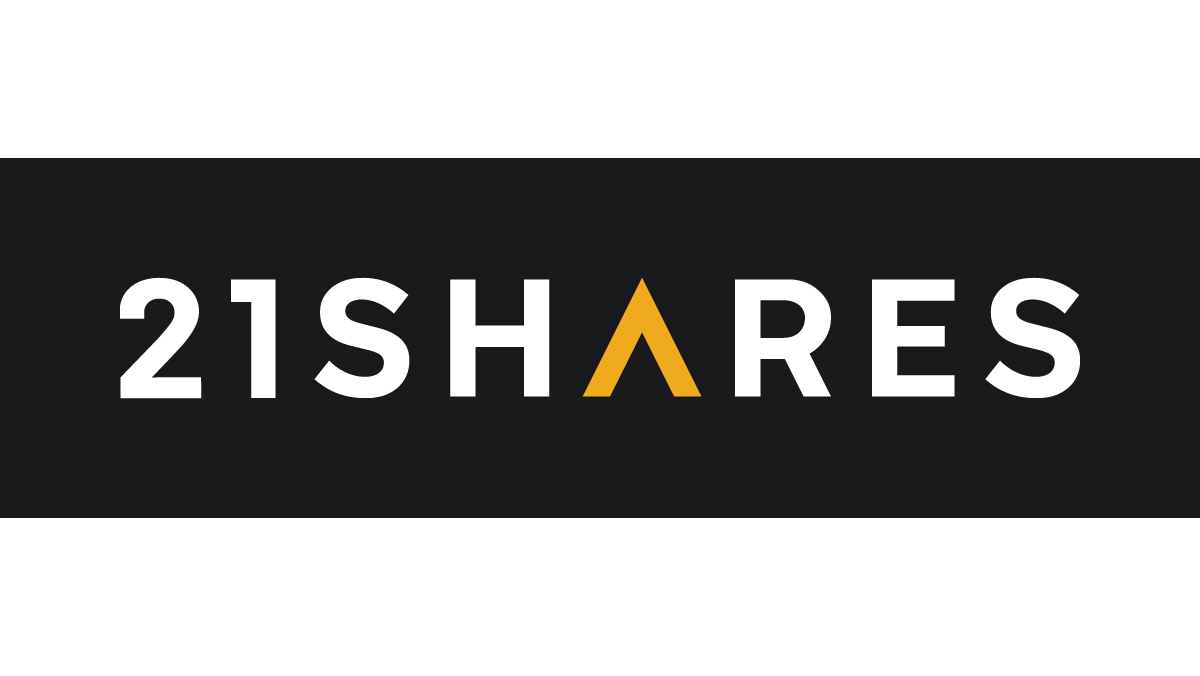
The state of the weakening dollar gave a glimmer of hope for a relief rally, conservatively lifting both equities and crypto. Within the cryptoverse, large caps remained steadier than previous weeks as Bitcoin was seen ranging between the $28.5K-$31K, meanwhile Ethereum wicked down to the yearly-low major support level at $1700 only to rebound, sweep the $2100 resistance level and continue oscillating within this range. The total crypto marketcap gained roughly 6% following the turbulent week that saw the collapse of the Luna token and its counterpart UST stablecoin.
Now, even though the valuations of some of the market’s blue chips has returned to levels not seen since late 2020, it still seems that further drawdown could be on the table. Reason being is that entities with less than 10 BTC in their portfolio managed to add the 2nd highest amount to their stack on the 20th of May, as seen below. A signal that illustrates that we may not be out of the woods yet since retail hasn’t been able to aptly time local or macro bottoms on a historical basis.
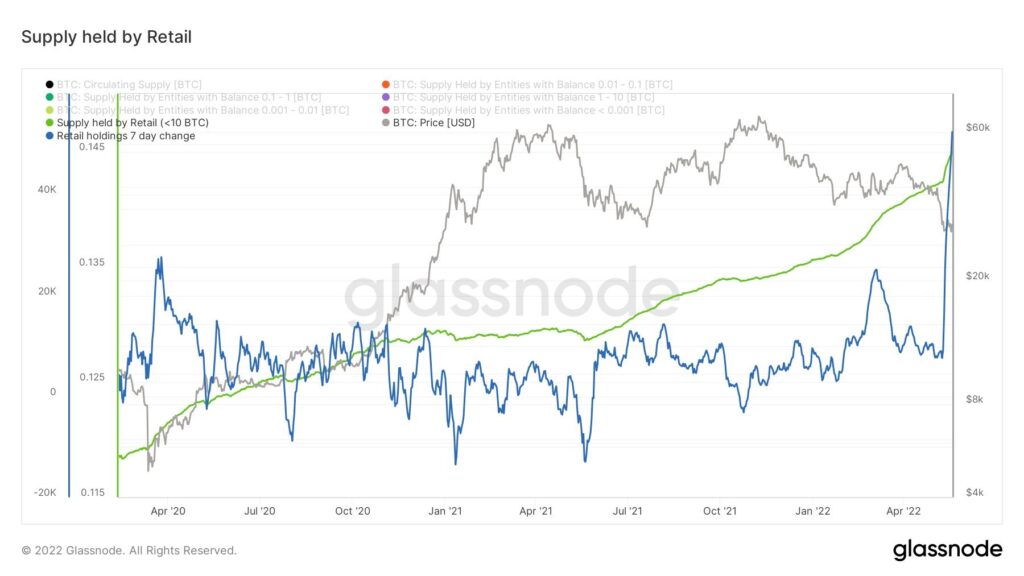
Source: Glassnode
However, as the dust begins to settle pertaining to this implosion, the industry has begun to comprehend what came to pass during this unsettling period. The collapse first started with a huge sell-off of $UST on both Centralized and Decentralized Exchanges, which caused the peg to deviate from the $1 mark. While the native mint-burn mechanism (Check out our Statement for details) between $LUNA and $UST can help $UST to slightly restore the peg at the beginning, the consequences are crashing $LUNA’s price by minting tremendous amount of $LUNA in the market. Accordingly, the token’s circulating supply soared to 6T from 340M, causing Luna’s value to deteriorate and bring down UST’s peg along with it.
The crumbling state of affairs led to what is known as the death spiral. It became apparent that despite the Luna Foundation Guard’s attempts to use their 80K BTC reserve to maintain the UST peg, the liquidity was not enough to act as the exit liquidity for UST holders. Not only did the peg fail to restore, but the BTC selloff also caused the slump in Bitcoin’s price and the wider market drawdown that followed. In light of the collapse of the blockchain and the algorithmic stablecoin, Terra’s founder, Do Kwon, has announced a Revival Plan that includes launching a new Terra blockchain. The new Terra blockchain will go live on 27 May if the proposal passes successfully. The existing network will be renamed to Terra Classic, while its token will be renamed as $LUNC.
Regulations and Adoption
The main key giveaway on the regulatory side this week had been the Biden’s Administration’s plans to demand crypto exchanges to separate retail and corporate clients’ funds. The key driver behind the proposition could be due to Coinbase’s recent alert that customers will lose money if they go bankrupt.
Within the exchanges vertical, Binance was found to be seeking regulatory approval in Germany, trying to obtain a license for operation. Bitmex’s Founder was recently sentenced to 6 months of home detention instead of jail time due to violating the US Bank Secrecy Act (BSA). However, the event did not stop Bitmex’s expansions efforts. They have launched a spot trading service beyond solely focusing on derivatives. While traditional players are trying to gain exposure in crypto, FTX US expanded its offerings to traditional finance by offering 0 commission stock trading. There will be no minimum balances, 0 fee brokerage account, 0 commission trading and free market data.
Speaking of crypto’s adoption, the trend was preserved as we saw multiple traditional players tipping their toes or expanding their exposures into the industry. For example, one of the Big 4 Accounting firms, EY, has launched a new supply chain service, OpsChain, on Polygon Nightfall. This service is co-developed with Polygon and will allow organizations to create tokens or NFTs as a representation of assets and inventory within companies that can be traced on the blockchain. Nomura is preparing to launch a crypto subsidiary in the traditional banking side, and Julius Baer is also planning to offer their high net worth clients crypto exposures.
The race for building an EVM wallet is heating up as we saw multiple companies gearing up their efforts to launch a Metamask competitor. First it was reported that Revolut had plans to launch a non-custodial crypto wallet on Ethereum. The function will be similar to Metamask, one of the most popular non-custodial wallets. GameStop also has released a self-custodial Ethereum wallet instead of a non-custodial one for users to store, send and receive cryptos and NFTs. Robinhood also has indicated its plans to launch a custodial wallet for users to trade cryptos and NFTs. In other news, the E-Commerce giant eBay will be launching their 1st NFT collection, with 13 limited-edition NFTs in partnership with Web3 platform OneOf. Spotify and Instagram are pilot testing the NFT features on their platforms via selected producers/artists.
DeFi and NFTs
Ethereum($ETH) Co-Founder, Vitalik Buterin said “The Merge” upgrade will happen in August. This upgrade will shift Ethereum from a Proof-of-Work to a Proof-of-Stake blockchain. Alternative Layer 1 blockchain, Fantom($FTM) has seen a price pump this week. $FTM token dropped to $0.25 on 11 May and rose as high as $0.51 on 24 May. The price movement is likely fueled by the speculation that Andre Cronje, the founder of Yearn Finance, is returning to Fantom since he committed the github of Fantom’s stablecoin project. Ethereum’s scaling solution, Optimism, is going to launch a new upgrade named Bedrock. The upgrade will bring higher speed, lower cost, and Ethereum Virtual Machine (EVM) Compatibility to the solution.
In the DeFi market, Near’s ($NEAR) Layer 2 solution, Aurora($AURORA) launched Aurora+, which offers users 50 free transactions per month and airdrop to early users. In light of the brief depeg event that occured to $USDT, Tether announced that they had reduced the commercial paper holding to improve the reserves’ quality. In the meantime, Tether also requested the state of New York’s supreme court to refrain the public from examining documents related to Tether’s reserves during the last several years. However, the request was denied.
In the NFT market, Aave($AAVE), a blue-chip money market protocol, has launched a decentralized social graph named Lens Protocol on Polygon. Developers can build social media platforms on top of Lens Protocol and users can mint social profiles, follow others, and create and collect posts in an on-chain way. Finally, with respect to capital raising, VC giant A16Z launched a $600M gaming fund to be utilised for investing in game studios, apps and infrastructure. While it may not be a crypto native fund, crypto gameFi startups could also benefit from the funding given A16Z ‘s rapid investments in the crypto space. Good news aside, Axie Infinity’s Discord bot was compromised. Hackers released fake minting messages to users, but the team deleted the statement shortly after.
Weekly Returns
The returns of the top five cryptoassets over the last week were as follows — BTC (-4.38%), ETH (-5.77%), BNB (3.65%), ADA(-11.28%), XRP (-7.65%).
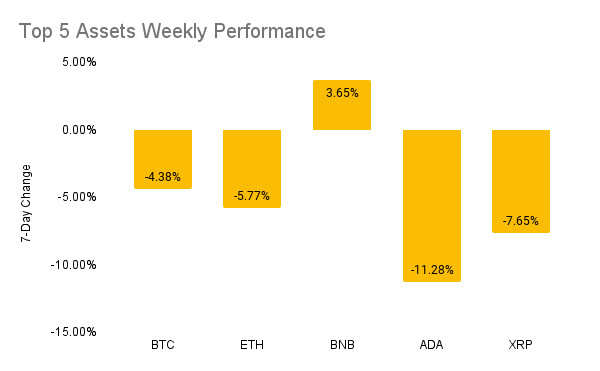
Net Inflows per 21Shares ETP
The net Inflows of our ETPs amounted to $4.65M in the past week. Find the breakdown of the inflows and outflows per ETP below.
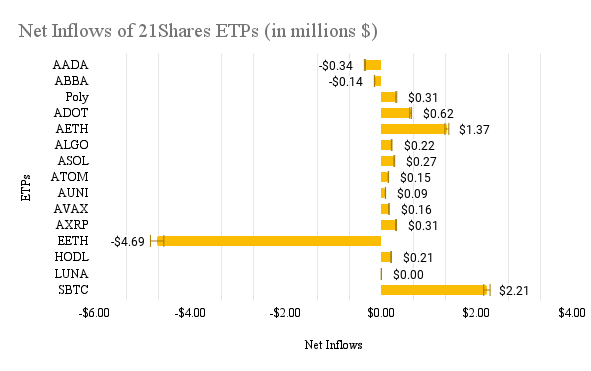
Media Coverage
This week we are thrilled to reveal that we are launching two US-based funds; the 21Shares Crypto Basket 10 Index Fund, tracking the performance of the top 10 cryptocurrencies with regards to market capitalization, and 21Shares Crypto Mid-Cap Index Fund, offering diversified exposure to the next tier of emerging cryptoassets, those ranked 3 through 10 in market capitalisation.
“Historically, the cumulative return rate of the top dozen cryptocurrencies has vastly outperformed traditional indexes like the S&P 500, Dow Jones Industrial Average, or Nasdaq Composite,” said Arthur Krause, Director of Product at 21Shares. “Our two new index funds enable accredited investors to participate in cryptocurrencies without assuming the responsibility of managing custodial arrangements, tracking private keys and passwords, or being susceptible to hacking or security breaches.”
On this occasion, Ophelia Snyder, president and co-founder of 21Shares, made an appearance on Coindesk to discuss the launch of our first two crypto ETPs in the US for accredited investors. Ophelia also discussed the impact of Terra’s collapse and the wider crypto bear market on investor demand. On Bloomberg Technology, Hany Rashwan, 21Shares’ CEO and co-founder was featured to also speak about the company’s first ETPs in the US market.
News
Opensea introduces seaport, a protocol for creating tailor-made NFT marketplaces
What happened?
Opensea revealed the launch of their latest NFT platform – built on the centralized firm’s new marketplace protocol. Dubbed Seaport, the new protocol is expected to accord users with flexibility in exchanging NFT collections such that other ERC20 tokens (ETH-based tokens), as well as ERC 721/1151 (baseline standards for NFT collections), would be deemed as an acceptable form of payment. This is rather than exclusively relying on the native tokens of the multiple blockchains Opensea supports for its hosted collections.
Furthermore, the brand new protocol will feature an improved message signing capability that should help reduce the exuberant gas fees while clearly illustrating what item should be obtained in exchange for which collection of token(s). In addition, the protocol’s refinements should bring forward a more nuanced trading regime as offers will not be limited to collections anymore and will instead trickle down to traits.
Why does it matter?
Several reasons contribute to the excitement behind this key development. One, buyers in this new paradigm will have the opportunity to leverage their current asset holdings immediately without jumping through several hoops to obtain either ETH or any of the other currencies their preferred collections are denominated in. The convenience offered through this system design is reminiscent of the early days of the decentralized exchanges vertical, particularly around the birth of Uniswap.
Cultivating a user-intuitive front-end experience encourages wider market participation while allowing for sophisticated trading strategies. Considering how DeFi was pushed forwards with the introduction of new complicated protocols that leveraged the DEXs infrastructure, the NFT industry should expect to observe an unprecedented level of innovation over the next couple of months on the back of this refinement.
Open Sourcing the protocol is another benefit that will allow for healthy competition to underpin the breeding of new exciting products. In fact, the evolution will assist in better servicing the end-users, while clearing the way for further decentralization of the NFT marketplace landscape by enabling growing protocols to target a portion of the lion’s share dominated by opensea.
Research Newsletter
Each week the 21Shares Research team will publish our data-driven insights into the crypto asset world through this newsletter. Please direct any comments, questions, and words of feedback to research@21shares.com
Disclaimer
The information provided does not constitute a prospectus or other offering material and does not contain or constitute an offer to sell or a solicitation of any offer to buy securities in any jurisdiction. Some of the information published herein may contain forward-looking statements. Readers are cautioned that any such forward-looking statements are not guarantees of future performance and involve risks and uncertainties and that actual results may differ materially from those in the forward-looking statements as a result of various factors. The information contained herein may not be considered as economic, legal, tax or other advice and users are cautioned to base investment decisions or other decisions solely on the content hereof.
Du kanske gillar

Det enklaste sättet att investera på hela den sydkoreanska aktiemarknaden är att investera i ett brett marknadsindex. Detta kan göras till låg kostnad genom att använda ETFer för att investera i Sydkorea.
På den sydkoreanska aktiemarknaden finns det tre index som spåras av sex olika ETFer. Ett annat alternativ är att investera i index på Asien-Stillahavsområdet och tillväxtmarknader.
Index på sydkoreanska aktier
För en investering på den sydkoreanska aktiemarknaden finns det tre tillgängliga index som spåras av sex olika ETFer. På FTSE Korea 30/18 Capped-index finns en ETF. På MSCI Korea 20/35-indexet finns fyra olika ETFer. På MSCI Korea 20/35 Custom-indexet finns en ETF. Den totala kostnadskvoten (TER) för ETFer på dessa index är mellan 0,09 % p.a. och 0,74 % p.a.
| Index | Fokus | Antal ETFer | Antal aktier | Beskrivning |
| FTSE Korea 30/18 Capped | Sydkorea | 1 | 161 | FTSE Korea 30/18 Capped-index följer de största aktierna från Sydkorea. Det största bolaget i indexet är begränsat till högst 30 procent av indexkapitaliseringen, alla övriga indexkomponenter till högst 18 procent. |
| MSCI Korea 20/35 | Sydkorea | 4 | 111 | MSCI Korea 20/35-indexet följer koreanska aktier med stora och medelstora börser. Vikten av den största beståndsdelen är begränsad till 35 % och vikten av alla andra beståndsdelar är begränsad till maximalt 20 %. |
| MSCI Korea 20/35 Custom | Sydkorea | 1 | 111 | MSCI Korea 20/35 Custom-indexet spårar koreanska aktier med stora och medelstora börser. Vikten av den största beståndsdelen är begränsad till 35 % och vikten av alla andra beståndsdelar är begränsad till maximalt 20 %. En buffert på 10 % tillämpas på dessa limiter vid varje indexombalansering. |
Olika index kan ge olika utveckling
Att olika index kan ge olika resultat är klart. Ett av de mest klassiska exemplen på detta är S&P 500 och Nasdaq-100 i USA. Båda två är så kallade benchmarks som ofta nämns i nyhererna, men de spårar olika saker.
När det gäller Sydkorea så finns det tre index, FTSE Korea 30/18 Capped, MSCI Korea 20/35 och MSCI Korea 20/35 Custom, som båda omfattar sydkoreanska large och mid cap företag. De är olika viktade, men bör kunna anses fungera som en bra proxy för varandra.
Den som överväger att investera i någon av dessa fonder måste således bestämma sig för vilken del av den sydkoreanska ekonomin som de önskar exponering mot. Först därefter går det att välja vilken ETF att investera i.
Baserat på svaret är det sedan enkelt. Finns det sedan flera olika börshandlade fonder som täcker samma index eller segment är det förvaltningskostnaden som avgör. En halv procents skillnad, mer korrekt 0,65 procent är skillnaden mellan den billigaste av dessa Sydkoreafonder, Franklin Templetons ETF och den näst billigaste, den som iShares erbjuder.
Antar vi att dessa Sydkoreafonder ger samma avkastning kommer den som har lägst avgift att utvecklas bäst, allt annat lika. Grundregeln är alltså, betala aldrig för mycket då detta kommer att äta upp din avkastning.
De billigaste Sydkoreas ETFerna efter total kostnadskvot (TER)
| 1 | Franklin FTSE Korea UCITS ETF | +0.09% p.a. |
| 2 | Amundi MSCI Korea UCITS ETF Acc | +0.45% p.a. |
| 3 | Xtrackers MSCI Korea UCITS ETF 1C | +0.45% p.a. |
Franklin FTSE Korea UCITS ETF
Franklin FTSE Korea UCITS ETF investerar i aktier med fokus på Sydkorea. Utdelningarna i fonden återinvesteras (ackumuleras). FTSE Korea 30/18 Capped tillåter en bred investering med låga avgifter på ca. 150 aktier.
Den totala kostnadskvoten uppgår till 0,09 % per år. Fonden replikerar resultatet för det underliggande indexet genom att köpa alla indexbeståndsdelar (full replikering). Franklin FTSE Korea UCITS ETF har tillgångar på 312 miljoner GBP under förvaltning. FLXK ETF är äldre än 1 år och har sin hemvist i Irland.
Handla FLXK ETF
Franklin FTSE Korea UCITS ETF (FLXK ETF) är en europeisk börshandlad fond. Denna fond handlas på flera olika börser, till exempel Borsa Italiana, Deutsche Boerse Xetra, Euronext Amsterdam och London Stock Exchange. Av den anledningen förekommer olika kortnamn på samma börshandlade fond.
Det betyder att det går att handla andelar i denna ETF genom de flesta svenska banker och Internetmäklare, till exempel DEGIRO, Nordnet, Aktieinvest och Avanza.
Lyxor MSCI Korea UCITS ETF – Acc
Lyxor MSCI Korea UCITS ETF – Acc (LKOR ETF) handlas också under kortnamnet KRW. Denna börshandlade fond kommer med en förvaltningskostnad på 0,45 procent. LKOR återinvesterar den erhållna utdelningen.
Amundi MSCI Korea UCITS ETF
Amundi MSCI Korea UCITS ETF – Acc är en UCITS-kompatibel börshandlad fond som syftar till att spåra indexindex MSCI Korea 20/35 Index ökat med möjlig utdelning från de aktier som utgör indexet. MSCI Korea 20/35 Index är ett index för free float marknadsvärde som representerar ungefär 85% av det totala kapitalet i Sydkorea.
Handla LKOR
Amundi MSCI Korea UCITS ETF – Acc är en europeisk ETF. Fonden handlas på flera olika börser, till exempel Borsa Italiana, Deutsche Boerse Xetra, Euronext Paris och London Stock Exchange. Av den anledningen förekommer olika kortnamn på samma börshandlade fond.
Det betyder att det går att handla andelar i denna ETF genom de flesta svenska banker och Internetmäklare, till exempel DEGIRO, Nordnet, Aktieinvest och Avanza.
Xtrackers MSCI Korea UCITS ETF 1C
Xtrackers MSCI Korea UCITS ETF 1C (DBX8 ETF) investerar i aktier med fokus på Sydkorea. Utdelningarna i fonden återinvesteras (ackumulerar).
Den totala kostnadskvoten uppgår till 0,65 % per år. Fonden replikerar resultatet för det underliggande indexet genom att köpa alla indexbeståndsdelar (full replikering). Xtrackers MSCI Korea UCITS ETF 1C har tillgångar på 87 miljoner GBP under förvaltning. DBX8 ETF är äldre än 5 år och har hemvist i Luxemburg.
Handla DBX8 ETF
Xtrackers MSCI Korea UCITS ETF 1C (DBX8 ETF) är en europeisk börshandlad fond. Denna fond handlas på flera olika börser, till exempel Borsa Italiana, Deutsche Boerse Xetra och London Stock Exchange. Av den anledningen förekommer olika kortnamn på samma börshandlade fond.
Det betyder att det går att handla andelar i denna ETF genom de flesta svenska banker och Internetmäklare, till exempel DEGIRO, Nordnet, Aktieinvest och Avanza.
HSBC MSCI Korea Capped UCITS ETF USD
HSBC MSCI Korea Capped UCITS ETF USD investerar i aktier med fokus på Sydkorea. Utdelningen i fonden delas ut till investerarna (halvårsvis).
Den totala kostnadskvoten uppgår till 0,50 % p.a. Fonden replikerar resultatet för det underliggande indexet genom att köpa alla indexbeståndsdelar (full replikering). HSBC MSCI Korea Capped UCITS ETF USD är en liten ETF med tillgångar på 36 miljoner GBP under förvaltning. H4Z9 ETF är äldre än 5 år och har sin hemvist i Irland.
Handla H4Z9 ETF
HSBC MSCI Korea Capped UCITS ETF USD (H4Z9 ETF) är en europeisk börshandlad fond. Denna fond handlas på flera olika börser, till exempel Borsa Italiana, Deutsche Boerse Xetra och London Stock Exchange. Av den anledningen förekommer olika kortnamn på samma börshandlade fond.
Det betyder att det går att handla andelar i denna ETF genom de flesta svenska banker och Internetmäklare, till exempel DEGIRO, Nordnet, Aktieinvest och Avanza.
iShares MSCI Korea UCITS ETF (Acc)
iShares MSCI Korea UCITS ETF (Acc) (CSKR ETF) investerar i aktier med fokus på Sydkorea. Utdelningarna i fonden återinvesteras (ackumulerar).
Den totala kostnadskvoten uppgår till 0,65 % per år. Fonden replikerar resultatet för det underliggande indexet genom att köpa alla indexbeståndsdelar (full replikering). iShares MSCI Korea UCITS ETF (Acc) är en liten ETF med tillgångar på 85 miljoner GBP under förvaltning. CSKR ETF är äldre än 5 år och har sin hemvist i Irland.
Handla CSKR ETF
iShares MSCI Korea UCITS ETF (Acc) (CSKR ETF) är en börshandlad fond (ETF) som handlas på London Stock Exchange.
London Stock Exchange är en marknad som få svenska banker och nätmäklare erbjuder access till, men DEGIRO gör det.
iShares MSCI Korea UCITS ETF (Dist)
iShares MSCI Korea UCITS ETF (Dist) (IQQK ETF) investerar i aktier med fokus på Sydkorea. Utdelningen i fonden delas ut till investerarna (halvårsvis).
Den totala kostnadskvoten uppgår till 0,74 % per år. Fonden replikerar resultatet för det underliggande indexet genom att köpa alla indexbeståndsdelar (full replikering). iShares MSCI Korea UCITS ETF (Dist) har tillgångar på 306 miljoner GBP under förvaltning. IQQK ETF är äldre än 5 år och har sin hemvist i Irland.
Handla IQQK ETF
iShares MSCI Korea UCITS ETF (Dist) (IQQK ETF) är en europeisk börshandlad fond. Denna fond handlas på flera olika börser, till exempel Borsa Italiana, Deutsche Boerse Xetra, Euronext Amsterdam och London Stock Exchange. Av den anledningen förekommer olika kortnamn på samma börshandlade fond.
Det betyder att det går att handla andelar i denna ETF genom de flesta svenska banker och Internetmäklare, till exempel DEGIRO, Nordnet, Aktieinvest och Avanza.
Alternativa investeringsmöjligheter
Asien-Stillahavsområdet index med en stor andel av Sydkorea
Förutom Sydkoreas ETFer kan du överväga ETFer i Asien-Stillahavsområdet. Totalt kan du investera i fem Asien-Stillahavsområdet-index, som spåras av 14 ETFer. Den totala kostnadskvoten (TER) för börshandlade fonder på Asien-Stillahavsområdet är mellan 0,12 % p.a. och 0,74 % p.a.
| Index | Fokus | Antal ETFer | Antal aktier | Beskrivning |
| FTSE Developed Asia Pacific ex Japan | Stillahavsområdet Sydkorea: 28.19% | 2 | 399 | FTSE Developed Asia Pacific ex Japan-index spårar stora och medelstora aktier från utvecklade länder i Asien och Stillahavsområdet exklusive Japan. |
| MSCI AC Asia Pacific ex Japan | Stillahavsområdet Sydkorea: 11.25% | 1 | 1,246 | MSCI AC Asia Pacific ex Japan-index spårar aktiemarknaderna i tillväxt- och utvecklade länder i Asien och Stillahavsområdet, exklusive Japan. |
| MSCI AC Asia ex Japan | Stillahavsområdet Sydkorea: 13.61% | 2 | 1,182 | MSCI AC Asia ex Japan-indexet spårar aktiemarknaderna i tillväxt- och utvecklade länder i Asien-regionen, exklusive Japan. |
| MSCI AC Far East ex Japan | Stillahavsområdet Sydkorea: 16.39% | 4 | 1,046 | MSCI AC Far East ex Japan-indexet spårar aktiemarknaderna i tillväxt- och utvecklade länder i den östasiatiska regionen, exklusive Japan. |
| MSCI Emerging Markets Asia | Stillahavsområdet Sydkorea: 15.31% | 5 | 1,131 | MSCI Emerging Markets Asia-index spårar stora och medelstora företag från asiatiska tillväxtmarknader. |
Tillväxtmarknadsindex med en stor andel av Sydkorea
Förutom Sydkoreas ETFer kan du överväga ETFer på tillväxtmarknader. Totalt kan du investera i ett tillväxtmarknadsindex, som spåras av 23 ETFer. Den totala kostnadskvoten (TER) för dessa ETFer på tillväxtmarknader är mellan 0,14 % p.a. och 0,66 % p.a.
| Index | Fokus | Antal ETFer | Antal aktier | Beskrivning |
| MSCI Emerging Markets | Stillahavsområdet Sydkorea: 11.95% | 23 | 1 376 | MSCI Emerging Markets-index spårar aktier från tillväxtmarknader över hela världen. |
Nyheter
WELR ETF för företag som arbetar med kommunikationstjänster
Publicerad
13 timmar sedanden
30 april, 2025
Amundi S&P Global Communication Services ESG UCITS ETF DR EUR (D) (WELR ETF) med ISIN IE000ANYHV73, strävar efter att spåra S&P-utvecklade Ex-Korea LargeMidCap Sustainability Enhanced Communication Services-index. Det S&P-utvecklade ex-Korea LargeMidCap Sustainability Enhanced Communication Services-indexet spårar stora och medelstora aktier. Alla värdepapper i indexet är klassificerade i sektorn Communication Services enligt Global Industry Classification Standard (GICS). Aktierna som ingår filtreras enligt ESG-kriterier (miljö, social och bolagsstyrning).
Den börshandlade fondens TER (total cost ratio) uppgår till 0,18% p.a.. Amundi S&P Global Communication Services ESG UCITS ETF DR EUR (D) är den billigaste ETF som följer S&P Developed Ex-Korea LargeMidCap Sustainability Enhanced Communication Services index. ETFen replikerar det underliggande indexets prestanda genom fullständig replikering (köper alla indexbeståndsdelar). Utdelningarna i ETFen delas ut till investerarna (Årligen).
Amundi S&P Global Communication Services ESG UCITS ETF DR EUR (D) är en mycket liten ETF med tillgångar på 7 miljoner euro under förvaltning. Denna ETF lanserades den 20 september 2022 och har sin hemvist i Irland.
Investeringsmål
AMUNDI S&P GLOBAL COMMUNICATION SERVICES ESG UCITS ETF DR – EUR (D) försöker replikera, så nära som möjligt, resultatet av S&P Developed Ex-Korea LargeMidCap Sustainability Enhanced Communication Services Index (Netto Total Return Index). Denna ETF har exponering mot stora och medelstora företag i utvecklade länder. Den innehåller uteslutningskriterier för tobak, kontroversiella vapen, civila och militära handeldvapen, termiskt kol, olja och gas (inkl. Arctic Oil & Gas), oljesand, skiffergas. Den är också utformad för att välja ut och omvikta företag för att tillsammans förbättra hållbarhet och ESG-profiler, uppfylla miljömål och minska koldioxidavtrycket.
Handla WELR ETF
Amundi S&P Global Communication Services ESG UCITS ETF DR EUR (D) (WELR ETF) är en europeisk börshandlad fond. Denna fond handlas på flera olika börser, till exempel Deutsche Boerse Xetra.
Det betyder att det går att handla andelar i denna ETF genom de flesta svenska banker och Internetmäklare, till exempel DEGIRO, Nordnet, Aktieinvest och Avanza.
Börsnoteringar
Största innehav
Denna fond använder sig av fysisk replikering för att spåra utvecklingen av det underliggande indexet.
| Namn | Valuta | Vikt % | Sektor |
| ALPHABET INC CL A | USD | 18.49 % | Kommunikationstjänster |
| META PLATFORMS INC-CLASS A | USD | 17.21 % | Kommunikationstjänster |
| ALPHABET INC CL C | USD | 15.48 % | Kommunikationstjänster |
| SOFTBANK GROUP CORP | JPY | 7.77 % | Kommunikationstjänster |
| WALT DISNEY CO/THE | USD | 6.40 % | Kommunikationstjänster |
| NINTENDO CO LTD | JPY | 3.83 % | Kommunikationstjänster |
| SOFTBANK CORP | JPY | 2.81 % | Kommunikationstjänster |
| TAKE-TWO INTERACTIVE SOFTWARE | USD | 2.48 % | Kommunikationstjänster |
| PUBLICIS GROUPE SA | EUR | 2.40 % | Kommunikationstjänster |
| UNIVERSAL MUSIC GROUP NV | EUR | 2.19 % | Kommunikationstjänster |
Innehav kan komma att förändras
Nyheter
Investerarna söker fonder som ger exponering mot försvarsindustrin
Publicerad
14 timmar sedanden
30 april, 2025
De senaste månaderna har det varit större förändringar på denna lista än normalt. Under april 2025 förändrades listan på de mest eftersökta ETFerna kraftigt, vilket numera är ganska normalt. Denna månad var det mycket frågor om fonder som ger exponering mot försvarindustrin.
Den ständiga favoriten Xact Norden Högutdelande har petats ned från sin första plats. Även en tidigare vinnare 21Shares Sui Staking ETP (ASUI ETP) som spårar kryptovalutan SUI har rasat.
Istället är det Sveriges första månadsutdelande ETF Montrose Global Monthly Dividend MSCI World UCITS ETF (MONTDIV ETF) med IE000DMPF2D5, kombinerar månatliga utdelningar, global diversifiering i världens största bolag och en systematisk optionsstrategi som hamnar högst upp på listan. Det är emellertid mycket fler frågor om fonder som ger exponering mot försvarindustrin. Vem vet, kanske ser vi hur listan förändras nästa månad?
Det går att handla andelar i dessa ETFer genom de flesta svenska banker och Internetmäklare, till exempel Nordnet, SAVR, DEGIRO och Avanza.
När kommer utdelningen från MONTDIV?
Sveriges första månadsutdelande ETF Montrose Global Monthly Dividend MSCI World UCITS ETF (MONTDIV ETF) förekommer på listan både med sitt fullständiga namn, kortnamn och till och med ISIN-kod. Ett helt nytt sökbegrepp är frågan om när utdelningen kommer och hur stor denna är. Får vi dessa uppgifter från Montrose så kommer vi att publicera detta på vår sida precis som vi gör med utdelningen från XACTs ETFer.
ETP, ETF, ETC, ETN, ETI och Eftmarknaden
Många är osäkra på terminologin när det gäller börshandlade produkter och vi ser dels hur de söker – och hittar många av de informativa artiklar som vi skrivit på Etfmarknaden.se, men också vår ordlista som förklarar det mesta som kan verkar förvirrande. En av våra äldre artiklar, Vad är vad? ETP, ETF, ETC, ETN och ETI från september 2012, har nu helt plötsligt dykt upp som en av de mer lästa artiklarna.
Månadsutdelande fonder tilldrar sig stort intresse
Den 6 november förra året, bara dagar efter att vi publicerat en artikel om månadsutdelande fonder, lanserade JP Morgan en helt ny variant av en månadsutdelande fond. JPMorgan US Equity Premium Income Active UCITS ETF USD (dist) (JEIP ETF) med ISIN IE000U5MJOZ6, är en aktivt förvaltad ETF.
Den börshandlade fonden investerar i företag från USA. Ytterligare intäkter söks genom användning av en överlagringsstrategi med derivatinstrument. Denna ETF strävar efter att generera en högre avkastning än S&P 500-index.
Detta ledde till att vi fick uppdatera vår artikel om månadsutdelande fonder med JEIP men också med JPMorgan Nasdaq Equity Premium Income Active UCITS ETF USD (dist) (JEQP ETF) med ISIN IE000U9J8HX9, som är en aktivt förvaltad ETF, men som mäter sig mot Nasdaq-100 istället.
Under den sista veckan i februari 2025 noterade Montrose den första svenska ETFen på fem år. MONTDIV ETF är Sveriges första månadsutdelande ETF och rusade snabbt på listan efter de mest eftersökta börshandlade fonderna på vår sida. Besök vår sida och läs mer om Montrose Global Monthly Dividend MSCI World UCITS ETF (MONTDIV ETF) fungerar.
Inte längre populärast av dem alla
XACT Norden Högutdelande är utan tvekan en av de mest populära av alla de ETFer som vi har skrivit om på vår sida. Den kvartalsvisa utdelningen och dess satsning på aktier med en låg volatilitet och hög direktavkastning gör det till en populär fond som återfinns i mångas depåer. Nyligen lämnades årets första utdelning från denna börshandlade fond.
Under mars 2025 förändrades listan på de mest eftersökta ETFerna kraftigt. Den största förändringen är att svenskarna har en ny favorit-ETF. Den ständiga favoriten Xact Norden Högutdelande har petats ned från sin första plats. Även förra månadens vinnare 21Shares Sui Staking ETP (ASUI ETP) som spårar kryptovalutan SUI har rasat. Istället är det Sveriges första månadsutdelande ETF Montrose Global Monthly Dividend MSCI World UCITS ETF (MONTDIV ETF) med IE000DMPF2D5, kombinerar månatliga utdelningar, global diversifiering i världens största bolag och en systematisk optionsstrategi som våra besökare letar information om.
Det betyder att det går att handla andelar i dessa ETFer genom de flesta svenska banker och Internetmäklare, till exempel Nordnet, SAVR, DEGIRO och Avanza.
Hur högt kommer vi när du Googlar på ordet ETF?
Under mars 2025 såg vi många sökningar på begreppen ETF, börshandlad fond och Etfmarknaden. Om det var vår egen sida eller om det var den totala marknaden för ETFer som besökarna sökte på vet vi inte, men efter att ha fått mail från en av de större emittenterna vet vi att de försöker kartlägga de svenska placerarnas exponering mot börshandlade fonder.
Om du söker på ordet ETF på Google, hur högt hamnar vi då?
Kraftigt ökat intresse för försvarsfonderna
Vilken ETF för försvarsindustrin är bäst och hur investerar man i denna sektor med hjälp av börshandlade fonder? I dag finns det tre ETFer som ger exponering mot flyg och försvar som följer tre olika index. De årliga förvaltningskostnaderna ligger 0,35 och 0,55 procent. Vi har skrivit en artikel om olika försvarsfonder. Du hittar mer om ETFer för försvarsindustrin här.
Utöver detta har Wisdomtree lanserat en försvarsfond som investerar i europeiska företag, och HANetf har meddelat att företaget har för avsikt att göra det samma. Namnet på HANetfs börshandlade fond är ännu inte känt, men kortnamnet kommer att vara ARMY i London och 8RMY på tyska Xetra.
Aktivt förvaltad fixed income ETF från iShares
BlackRock har lanserat iShares € Flexible Income Bond Active UCITS ETF (IFLX), en ny aktivt förvaltad Fixed Income UCITS ETF utformad för att maximera intäkter i portföljer samtidigt som den långsiktiga kapitaltillväxten bibehålls. IFLX ger kunderna det bästa av BlackRocks ränteinsikter i bekvämligheten med ETF-omslaget.
IFLX strävar efter att generera attraktiva intäkter genom en kärna av europeiska tillgångar genom att allokera över ränteuniversumet, utan begränsningar av traditionella riktmärken, samtidigt som de vanligtvis bibehåller ett IG-betyg. Fonden bygger på en diversifierad allokering till Investment Grade (IG)-krediter, High Yield (HY)-krediter och värdepapperiserade tillgångar, och strävar efter att maximera intäkter över marknadscykler.
Inte längre populärast av dem alla
XACT Norden Högutdelande är utan tvekan en av de mest populära av alla de ETFer som vi har skrivit om på vår sida. Den kvartalsvisa utdelningen och dess satsning på aktier med en låg volatilitet och hög direktavkastning gör det till en populär fond som återfinns i mångas depåer. Nyligen lämnades årets första utdelning från denna börshandlade fond.
Månadsutdelande fond från JPM tilldrar sig stort intresse
Den 6 november förra året, bara dagar efter att vi publicerat en artikel om månadsutdelande fonder, lanserade JP Morgan en helt ny variant av en månadsutdelande fond. JPMorgan US Equity Premium Income Active UCITS ETF USD (dist) (JEIP ETF) med ISIN IE000U5MJOZ6, är en aktivt förvaltad ETF.
Den börshandlade fonden investerar i företag från USA. Ytterligare intäkter söks genom användning av en överlagringsstrategi med derivatinstrument. Denna ETF strävar efter att generera en högre avkastning än S&P 500-index.
Detta ledde till att vi fick uppdatera vår artikel om månadsutdelande fonder med JEIP men också med JPMorgan Nasdaq Equity Premium Income Active UCITS ETF USD (dist) (JEQP ETF) med ISIN IE000U9J8HX9, som är en aktivt förvaltad ETF, men som mäter sig mot Nasdaq-100 istället.
Under den sista veckan i februari 2025 noterade Montrose den första svenska ETFen på fem år. MONTDIV ETF är Sveriges första månadsutdelande ETF och rusade snabbt på listan efter de mest eftersökta börshandlade fonderna på vår sida. Besök vår sida och läs mer om Montrose Global Monthly Dividend MSCI World UCITS ETF (MONTDIV ETF) fungerar.
Indien är en marknad som många söker information om
ETF Indien är inte en specifik börshandlad fond, men förekommer i en mängd olika varianter. Det finns tydligen ett stort intresse för att investera i indiska aktier bland sidan besökare, och då är kanske en ETF ett bra sätt att göra det. Vi skrev under i början av året en artikel om olika Indienfonder. Sedan dess har det dykt upp ytterligare ett par ETFer med fokus på Indien så vi har uppdaterat artikeln.
Halalfonder är nu hetare än ESG
Tidigare var det många som sökte på begreppet ESG, men detta sökord har fallit från listan under de senaste månaderna. En variant av ESG-fond är de fonder som har en islamistisk inriktning, så kallade halalfonder, och det är fortfarande något som våra besökare letar information om. En sådan fond är ASWE, som är en aktivt förvaltad shariafond men till exempel HSBC har en serie fonder med fokus på att investera enligt islam. Det är ingen speciell enskild fond som sticker ut och lockar mer än andra.
Räntesänkningar ökar intresset för fastigheter
Ett annat begrepp på listan är ETF fastigheter. Allt fler investerare tror att vi kommer att få se ytterligare räntesänkningar, inte bara i Sverige och Europa, men även i USA. Lägre räntor gör det enklare att räkna hem en investering i fastigheter. Kan det vara så att våra besökare undersöker möjligheterna att positionera sig i en ETF för fastigheter innan räntorna sänks för att de tror att det kommer att leda till en uppvärdering av fastighetsbolagen? Vill du ha några idéer så skrev vi en text om börshandlade fonder som investerar i fastigheter.
Du kan även läsa den text vi skrev i januari 2025 som heter 10 ETFer för att investera i fastigheter.
Du kan handla Ripple med olika börshandlade produkter
Valour Ripple (XRP) SEK är en börshandlad produkt som spårar priset på XRP, Ripples infödda token. XRP förbättrar främst globala finansiella överföringar och utbyte av flera valutor. Snabb och miljövänlig, den digitala tillgången XRP designades för att fungera som den mest effektiva kryptovalutan för olika applikationer inom finanssektorn.
Valour Ripple (XRP) SEK ETP (ISIN: CH1161139584) är en börshandlad produkt som spårar priset på XRP, Ripples infödda token.
XRP har ett börsvärde på 29,57 miljarder USD och rankas på en sjätte plats bland alla kryptovalutor globalt. Ripple XRP är en nyckelspelare inom det digitala valutaområdet, känd för sin användning för att underlätta snabba och billiga internationella pengaöverföringar. XRP fungerar på RippleNet och fungerar som en bryggvaluta i Ripples betalningsnätverk, vilket möjliggör sömlösa valutaväxlingar över hela världen. Detta har positionerat XRP som ett föredraget val för finansiella institutioner som söker effektiva alternativ till traditionella gränsöverskridande betalningsmetoder.
I somras meddelade Virtune att företaget lanserat sin egen version, Virtune XRP ETP på Nasdaq Stockholm idag den andra juli 2024. Denna produkt dyker också upp men betydligt längre ned på vår lista. Det var länge sedan någon av Virtunes produkter hamnade på listan, så det är extra kul att se att de dyker upp igen även om det är långt ned.
Produkten erbjuder exponering mot XRP. ETPn är 100% fysiskt uppbackad, handlas i SEK och är tillgänglig för investerare i Sverige och övriga Norden på Avanza och Nordnet.
Är du nyfiken på vilka börshandlade produkter det finns för att investera i XRP? Vi har självklart skrivit en artikel om detta där vi jämför alla de börshandlade alternativ vi hittat.
Kraftigt ökat intresse för försvarsfonderna
Vilken ETF för försvarsindustrin är bäst och hur investerar man i denna sektor med hjälp av börshandlade fonder? I dag finns det tre ETFer som ger exponering mot flyg och försvar som följer tre olika index. De årliga förvaltningskostnaderna ligger 0,35 och 0,55 procent. Vi har skrivit en artikel om olika försvarsfonder. Du hittar mer om ETFer för försvarsindustrin här.
Utöver detta har Wisdomtree lanserat en försvarsfond som investerar i europeiska företag, och HANetf har lanserat en egen version. Namnet på HANetfs börshandlade fond är ARMY i London och 8RMY på tyska Xetra.
Stort intresse för relativt okänd kryptovaluta
En relativt okänd kryptovaluta som ger exponering mot Sui-blockkedjan har dykt upp på listan. Vi har bara hittat två emittenter som erbjuder en produkt på denna kryptovaluta, schweiziska 21Shares och Valour.
21Shares Sui Staking ETP (ASUI ETP), med ISIN CH1360612159, är 100 % fysiskt uppbackad av SUI-tokens och spårar resultatet av SUI för att erbjuda ett enkelt, reglerat och transparent sätt för investerare att få exponering mot Sui-blockkedjan. Sui är designad för att tillhandahålla snabba, säkra och skalbara decentraliserade applikationer (dApps) med sitt utvecklarvänliga programmeringsspråk och innovativa sätt att behandla transaktioner. 21Shares Sui Staking ETP erbjuder ett enkelt, reglerat och transparent sätt att dra nytta av nätverkets växande användning.
Under oktober 2024 har Valour noterat sin egen ETP på denna kryptovaluta, Valour Sui (SUI) SEK med ISIN CH1213604601.
Halalfonder är nu hetare än ESG
Tidigare var det många som sökte på begreppet ESG, men detta sökord har fallit från listan under de senaste månaderna. En variant av ESG-fond är de fonder som har en islamistisk inriktning, så kallade halalfonder, och det är fortfarande något som våra besökare letar information om. En sådan fond är ASWE, som är en aktivt förvaltad shariafond men till exempel HSBC har en serie fonder med fokus på att investera enligt islam. Det är ingen speciell enskild fond som sticker ut och lockar mer än andra.
Räntesänkningar ökar intresset för fastigheter
Ett annat begrepp på listan är ETF fastigheter. Allt fler investerare tror att vi kommer att få se ytterligare räntesänkningar, inte bara i Sverige och Europa, men även i USA. Lägre räntor gör det enklare att räkna hem en investering i fastigheter. Kan det vara så att våra besökare undersöker möjligheterna att positionera sig i en ETF för fastigheter innan räntorna sänks för att de tror att det kommer att leda till en uppvärdering av fastighetsbolagen? Vill du ha några idéer så skrev vi en text om börshandlade fonder som investerar i fastigheter.
Du kan även läsa den text vi skrev i januari 2025 som heter 10 ETFer för att investera i fastigheter.
Montroses andra börshandlade fond etablerade sig snabbt
Den 10 april lanserade Montrose sin andra börshandlade fond, Montrose Global Leverage 125 MSCI World UCITS ETF (MONTLEV), Sveriges första globala ETF med hävstång. Den nya ETFen ger investerare en bred global exponering med en inbyggd hävstång på 1,25x.
Går det att handla ETFer hos Swedbank?
Swedbank ETF tror vi kan tolkas att det endera finns intresse för att veta om Swedbank har ETFer i sitt utbud, eller om det går att handla börshandlade fonder på Swedbank. Svaret på denna fråga återfinns här.
Dyrare kaffe skapar intresse för börshandlade produkter
Det stigande kaffepriset (som du kan följa här) har lett till ett ökat intresse bland investerarna för att köpa en ETF som spårar kaffepriset. Det finns emellertid ingen ETF som spårar kaffepriset, då Eus regler kräver att det finns minst 16 olika komponenter i en ETF. Det finns emellertid ett par ETCer som gör samma sak, till exempel WisdomTree Coffee (OD7B ETC).
Aktivt förvaltad fixed income ETF från iShares
BlackRock har lanserat iShares € Flexible Income Bond Active UCITS ETF (IFLX), en ny aktivt förvaltad Fixed Income UCITS ETF utformad för att maximera intäkter i portföljer samtidigt som den långsiktiga kapitaltillväxten bibehålls. IFLX ger kunderna det bästa av BlackRocks ränteinsikter i bekvämligheten med ETF-omslaget.
IFLX strävar efter att generera attraktiva intäkter genom en kärna av europeiska tillgångar genom att allokera över ränteuniversumet, utan begränsningar av traditionella riktmärken, samtidigt som de vanligtvis bibehåller ett IG-betyg. Fonden bygger på en diversifierad allokering till Investment Grade (IG)-krediter, High Yield (HY)-krediter och värdepapperiserade tillgångar, och strävar efter att maximera intäkter över marknadscykler.
EUDF ETF satsar på Europas försvarsindustri
WisdomTree Europe Defence UCITS ETF EUR Unhedged Acc (EUDF ETF) med ISIN IE0002Y8CX98, försöker spåra WisdomTree Europe Defence UCITS-index. WisdomTree Europe Defence UCITS-index spårar prestanda för europeiska företag som är engagerade i militär- eller försvarsindustrin.
Så här köper du den spanska aktiemarknaden med börshandlade fonder
Det enklaste sättet att investera på den spanska aktiemarknaden är att investera i ett brett marknadsindex. Detta kan göras till låg kostnad genom att använda ETFer. På den spanska aktiemarknaden hittar du tre index som spåras av fyra ETFer.
Förutom ETFer på Spanien, finns det inga regionala ETFer tillgängliga med en betydande vikt av spanska aktier. Även index för länder i euroområdet väger Spanien med mindre än tio procent.
Utdelningen i XACT Sverige
Under juni 2024 lämnade XACT Sverige sin årliga utdelning, något som fick många att söka information kring denna. XACT Sverige lämnar, till skillnad från XACT Norden Högutdelande, endast utdelning en gång per år. Av denna orsak blir det inte lika mycket skrivet om denna ETF. I år blir denna utdelning 25,10 SEK per andel vilket du kan läsa mer om här.
Indien är en marknad som många söker information om
ETF Indien är inte en specifik börshandlad fond, men förekommer i en mängd olika varianter. Det finns tydligen ett stort intresse för att investera i indiska aktier bland sidan besökare, och då är kanske en ETF ett bra sätt att göra det. Vi skrev under i början av året en artikel om olika Indienfonder. Sedan dess har det dykt upp ytterligare ett par ETFer med fokus på Indien så vi har uppdaterat artikeln.
Amerikanska large caps är något många vill veta mer om
Fonder som följer S&P 500 är, föga förvånande, en typ av fonder som det finns stort intresse kring. Det är ingen speciell enskild fond som sticker ut och lockar mer än andra. Det skall emellertid noteras att många sökningar sker på ord som ”Fond som följer S&P500 Avanza”. Vi skrev tidigare en artikel om S&P500 fonder, 26 börshandlade fonder som spårar S&P500 där vi jämförde alla de ETFer som spårar detta index i sin grundform.
En ny börshandlad fond från iShares lanserades under november. iShares S&P 500 Top 20 UCITS ETF (IS20) spårar resultatet för S&P 500 Top 20 Select 35/20 Capped-index. Fonden investerar direkt i de 20 största amerikanska företagen i S&P 500-indexet.
Valours Hedera ETP får många sökningar igen
I slutet av januari 2024 kommunicerade Valour att företaget hade för avsikt att lansera en fysiskt uppbackad börshandlad produkt (ETP) Valour HBAR Staking ETP i samarbete med The Hashgraph Association (THA) – en schweiziskbaserad produkt oberoende och ideell organisation fokuserad på att ge en digital framtid för alla genom att utnyttja Hederas miljövänliga distribuerade ledger-teknologi (DLT). Nu är denna kryptovaluta populär igen.
Kaspa kvar på listan trots ett minskat intresse
Valour Kaspa (KAS) SEK (Valour Kaspa SEK) med ISIN CH1108679379, är en börshandlad produkt (ETP) som spårar KAS, den infödda symbolen för Kaspa blockchain. Genom att använda sitt GhostDAG-protokoll bearbetar Kaspa block parallellt, vilket möjliggör snabb transaktionsavslutning och hög skalbarhet. KAS-tokenen används för transaktionsavgifter och nätverkssäkerhet genom mining. Med sin effektiva och decentraliserade design stöder Kaspa skalbara blockkedjeapplikationer, vilket ger både utvecklare och användare kraft.
Denna ETF ger exponering mot guldpriset – utan avgift
I och med att guldpriset har rört sig uppåt har intresset för guldfonder kommit att bli mer populärt överlag. Den mest populära fonden är 4GLD, Xetra-Gold som erbjuder investerare en optimal och enkel möjlighet att delta i utvecklingen av guldmarknaden. Dessutom är handel med Xetra-Gold också mycket kostnadseffektiv eftersom den till skillnad från andra värdepapper inte kommer med varken abonnemangsavgifter eller förvaltningsavgifter.
Holländska aktier ser ett ökat intresse
Vi har en kommande sammanställning på olika holländska aktier, men till dess går det att se närmare på börshandlade fonder som iShares AEX UCITS ETF (IAEX ETF) med ISIN IE00B0M62Y33, strävar efter att spåra AEX®-index. AEX®-indexet följer de 25 största och mest omsatta aktierna på den holländska aktiemarknaden och VanEck Vectors AEX UCITS ETF (TDT ETF) är en UCITS-kompatibel börshandlad fond som investerar i en portfölj av aktierelaterade värdepapper i syfte att ge investeringsavkastning som noggrant följer utvecklingen av AEX Index®.
Valour Solana ger börshandlad exponering mot denna kryptovaluta
Valour SOLANA (SOL) är en börshandlad produkt, som gör investeringar i SOL enkla, säkra och kostnadseffektiva. Solana är en decentraliserad blockchain och den snabbaste blockchain i världen, med mer än 400 projekt som spänner över DeFi, NFT, Web3 och mer.
Produkten är en strukturerad investering i form av ett tracker certifikat enligt svensk lag. Den handlas på Spotlight Stock Market som är den primära marknadsplatsen.
Det går att handla börshandlade fonder hos Nordea
Nordea har en plattform, och i denna handelstjänst erbjuder denna bank tusentals olika ETFer. Det går att handla ETFer med fokus på räntemarknaden, aktiemarknaden, landspecifika ETFer och börshandlade fonder med fokus på olika branscher. Att handla ETFer hos Nordea sker endera i Nordea Investor och nätbanken.
Investera i grekiska aktier med en börshandlad fond
Det enklaste sättet att investera på den grekiska aktiemarknaden är att investera i ett brett marknadsindex. Detta kan göras till låg kostnad genom att investera i Grekland med hjälp av en börshandlad fond. På den grekiska aktiemarknaden hittar du ett index som spåras av en ETF.
En bred satsning på råvarumarknaden
Fler och fler läsare söker information om råvarufonder. En av ETF som fått många sökningar är L&G Multi Strategy Enhanced Commodities UCITS ETF (EN4C ETF) syftar till att spåra resultatet för Barclays Backwardation Tilt Multi-Strategy Capped Total Return Index (”Indexet”).
Normalt sett är det samma fonder och börshandlade produkter som de nordiska investerarna söker på. Av den anledningen är det extra roligt att se att nya produkter hamnar bland de mest sökta. I detta fall är det Torbjörn Iwarsons nya råvarufond som lockar ett stort intresse. Det är Nordens enda riktiga råvarufond. Notera att just nu är råvarumarknaden är litet nedtryckt, så det är ett bra tillfälle att komma in billigt. Läs mer om Centaur Commodity Fund på deras hemsida.
VanEcks försvarsfond DFEN växer starkt
”Globala spänningar och ökande geopolitisk osäkerhet under de senaste åren har lett till att länder har prioriterat sin egen försvarskapacitet mycket högre”, säger Martijn Rozemuller, vd för VanEck Europe. ”Till exempel har diskussionen bland medlemsländerna om att öka försvarsutgifterna utöver Natos 2-procentsmål tagit fart mitt i aktuella händelser.” Du läser mer om DFEN här.
SAVRs ETF-satsning skapar stort intresse
SAVR har precis valt att lansera handel med börshandlande fonder. SAVR som tidigare varit kände för att erbjuda handel med traditionella fonder har nyligen valt att lansera handel med aktier, men också med ETFer på framför allt tyska Xetra. På denna marknad erbjuder nu SAVR med flera ETFer än vad både Nordnet och Avanza gör.
Samtidigt har SAVR valt att lansera en egen produkt tillsammans med amerikanska Vanguard, SAVR Global by Vanguard.
Dogecoin kryptovalutan med en hund som logotyp
Dogecoin (kod: DOGE, symbol: Ɖ och D) är en litecoinbaserad kryptovaluta. Dogecoin har sitt ursprung i internetmemen ’Doge’, och dess logotyp är en hund av rasen Shiba. Dogecoin har till skillnad från bitcoin ingen maximal mängd monetära enheter, utan når sin maximala tillväxthastighet vid 100 miljarder enheter.
I början av april 2025 meddelade 21Shares att företaget hade lanserat en börshandlad produkt DOGE ETP. 21Shares har ingått ett exklusivt partnerskap med House of Doge för att skapa 21Shares Dogecoin ETP, den enda Dogecoin ETP som godkänts av Dogecoin Foundation. Ännu så länge handlas denna ETP endast på SIX Swiss Exchange, men 21Shares brukar snabbt följa upp med handel på övriga börser i Europa.
Valour Dogecoin (DOGE) SEK, med ISIN CH1108679320, är en börshandlad produkt (ETP) som spårar priset på DOGE, den inhemska kryptovalutan i Dogecoin-nätverket. Dogecoin är känt för sina snabba transaktionshastigheter och låga avgifter och erbjuder en effektiv lösning för digitala betalningar, vilket gör det till ett praktiskt val för vardagliga transaktioner.
Stor skillnad på resultaten mellan sökmotorerna
Den svenska emittenten av börshandlade produkter, Virtune, som tidigare funnits med bland de hundra mest populära sökningarna har rasat kraftigt på listan och återfinns först på plats 147. Vi brukar ha med en eller ett par texter kring denna emittent varje månad på Etfmarknaden.se, och bolaget har under året lanserat sina produkter på den finska marknaden så detta fall förvånar oss. Precis som konkurrenten Valour noterar Virtune sina börshandlade kryptoprodukter i Sverige, och i svenska kronor.
Det skall emellertid noteras att när vi väljer att inte använda oss av Google utan istället av sökmotorn Bing så hamnar Virtune högt upp på listan. Det är emellertid en stor skillnad mellan antal sökningar hos Google och konkurrenten Bing. Hos Bing hamnar det felstavade sökbegreppet xrp virune avanza på femte plats medan virtune xrp etp avanza hamnar på elfte plats, vilket är högre än vad både både Xact Norden Högutdelande och Montrose placerar sig på denna sökmotor.

Investera i Sydkorea med börshandlade fonder

WELR ETF för företag som arbetar med kommunikationstjänster

Investerarna söker fonder som ger exponering mot försvarsindustrin

JCLS ETF – en högkvalitativ aktiv europeisk CLO-ETF

Kaffe och kakao är inte så elastiska råvaror som alla trott

Montrose storsatsning på ETFer fortsätter – lanserar Sveriges första globala ETF med hävstång

MONTLEV, Sveriges första globala ETF med hävstång

Sju börshandlade fonder som investerar i försvarssektorn

Världens första europeiska försvars-ETF från ett europeiskt ETF-företag lanseras på Xetra och Euronext Paris

Europeisk försvarsutgiftsboom: Viktiga investeringsmöjligheter mitt i globala förändringar
Populära
-
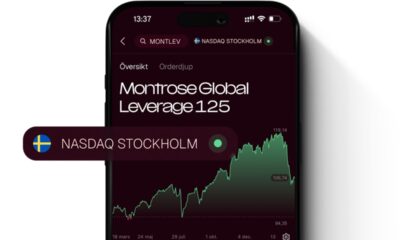
 Nyheter4 veckor sedan
Nyheter4 veckor sedanMontrose storsatsning på ETFer fortsätter – lanserar Sveriges första globala ETF med hävstång
-
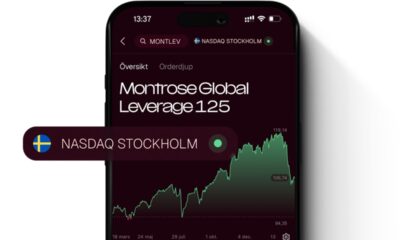
 Nyheter4 veckor sedan
Nyheter4 veckor sedanMONTLEV, Sveriges första globala ETF med hävstång
-

 Nyheter3 veckor sedan
Nyheter3 veckor sedanSju börshandlade fonder som investerar i försvarssektorn
-

 Nyheter3 veckor sedan
Nyheter3 veckor sedanVärldens första europeiska försvars-ETF från ett europeiskt ETF-företag lanseras på Xetra och Euronext Paris
-

 Nyheter4 veckor sedan
Nyheter4 veckor sedanEuropeisk försvarsutgiftsboom: Viktiga investeringsmöjligheter mitt i globala förändringar
-

 Nyheter3 veckor sedan
Nyheter3 veckor sedan21Shares bildar exklusivt partnerskap med House of Doge för att lansera Dogecoin ETP i Europa
-

 Nyheter2 veckor sedan
Nyheter2 veckor sedanHANetfs Tom Bailey om framtiden för europeiska försvarsfonder
-

 Nyheter6 dagar sedan
Nyheter6 dagar sedanFastställd utdelning i MONTDIV april 2025


